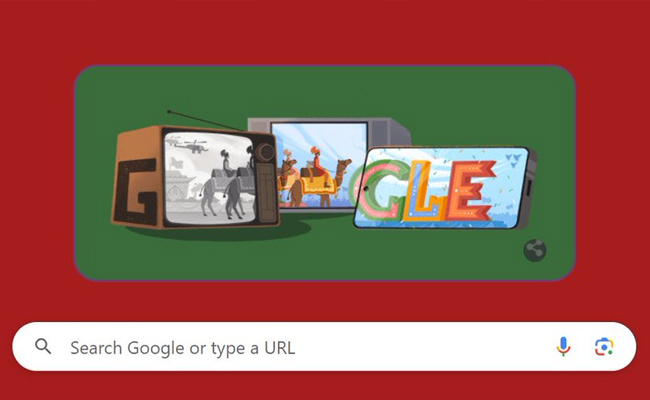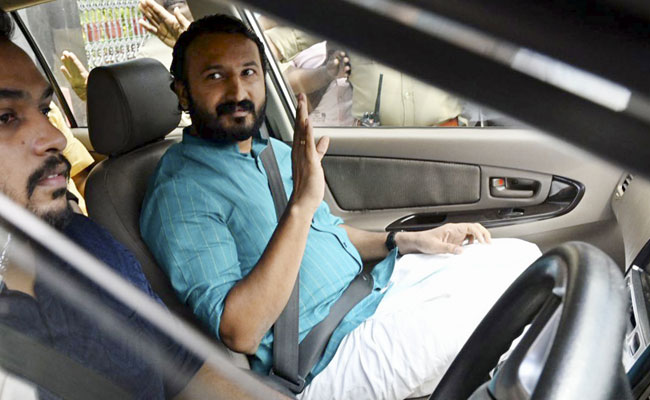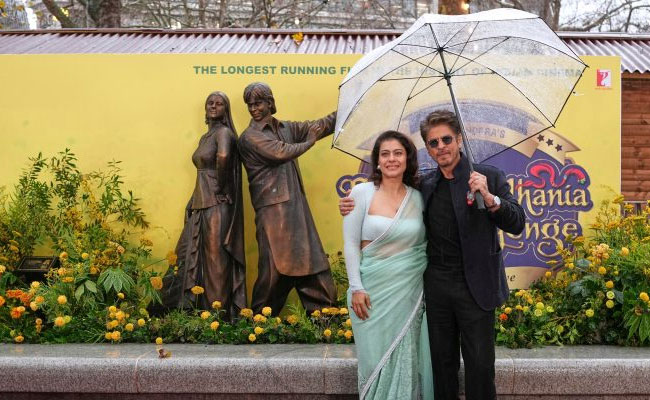New Delhi (PTI): Search giant Google has come up with a special doodle to mark India's 75th Republic Day, depicting the country's transition from the era of analogue TVs to smartphones.
The creative artwork signifies how the ceremonial parade would have been seen on screens across these decades.
India became independent in 1947 and a republic on January 26, 1950.
From big TV sets with cathode ray tubes to smaller ones and eventually, to smartphones, a lot has changed in India in these years.
The doodle depicts two TV sets and a mobile phone, with the letter 'G' on the left face of the first analogue television set, and the screens of the sets forming the two 'O's of 'GOOGLE'.
The remaining three letters 'G', 'L' and 'E' of the Google logo are displayed on the screen of the mobile handset placed in that order.
The first TV screen depicts scenes of the parade in black and white while the second one shows a camel contingent in colour, signifying the transition in technology.
"This Doodle celebrates India's Republic Day, which commemorates the day in 1950 when the Constitution of India was adopted and the nation declared itself a sovereign, democratic, and republic state," read a note on this doodle.
"Today's Doodle, illustrated by guest artist Vrinda Zaveri, features the Republic Day parade as it would have been seen on different screens over the decades," it said.
India is all set to celebrate its 75th Republic Day on Friday with an impressive display of military might and rich cultural heritage at the majestic Kartavya Path here.
The grand celebrations, with an overarching theme of projecting the nation's women power and democratic values, will be graced by French President Emmanuel Macron as the chief guest.
President of India Droupadi Murmu will lead the nation in celebrating the 75th Republic Day during a 90-minute parade at the ceremonial boulevard.
Let the Truth be known. If you read VB and like VB, please be a VB Supporter and Help us deliver the Truth to one and all.
Thiruvananthapuram (PTI): A Special Investigation Team (SIT) has been constituted to probe a second case of sexual assault against expelled Congress MLA Rahul Mamkootathil, police officials said on Friday.
The SIT will be led by G Poonguzhali, Assistant Inspector General at the Police Headquarters.
The team also includes a DSP rank officer and sub-inspectors, officials added.
The second sexual assault complaint was received by the Kerala Pradesh Congress Committee, which it forwarded to the state police chief.
ALSO READ: Cong expels rape-accused MLA Mamkootathil from party's primary membership
Following this, the Crime Branch registered a case and launched an investigation.
Crime Branch officials said the email complaint contained only the sender's email ID and no other contact details.
As part of the probe, they have sent a reply email requesting that the complainant contact them and provide her statement.
The complainant has alleged that she was sexually assaulted under the false promise of marriage, a Crime Branch official said.
However, details such as the location and date of the alleged incident are not currently available to the police.
The SIT will attempt to trace the sender of the email and record her statement, which is crucial for further investigation, the officer said.
Mamkootathil was expelled from the Congress party on Thursday after a court here rejected his anticipatory bail petition in another rape case.
Police said he is currently absconding, and a manhunt is underway in Kerala and neighbouring states.





